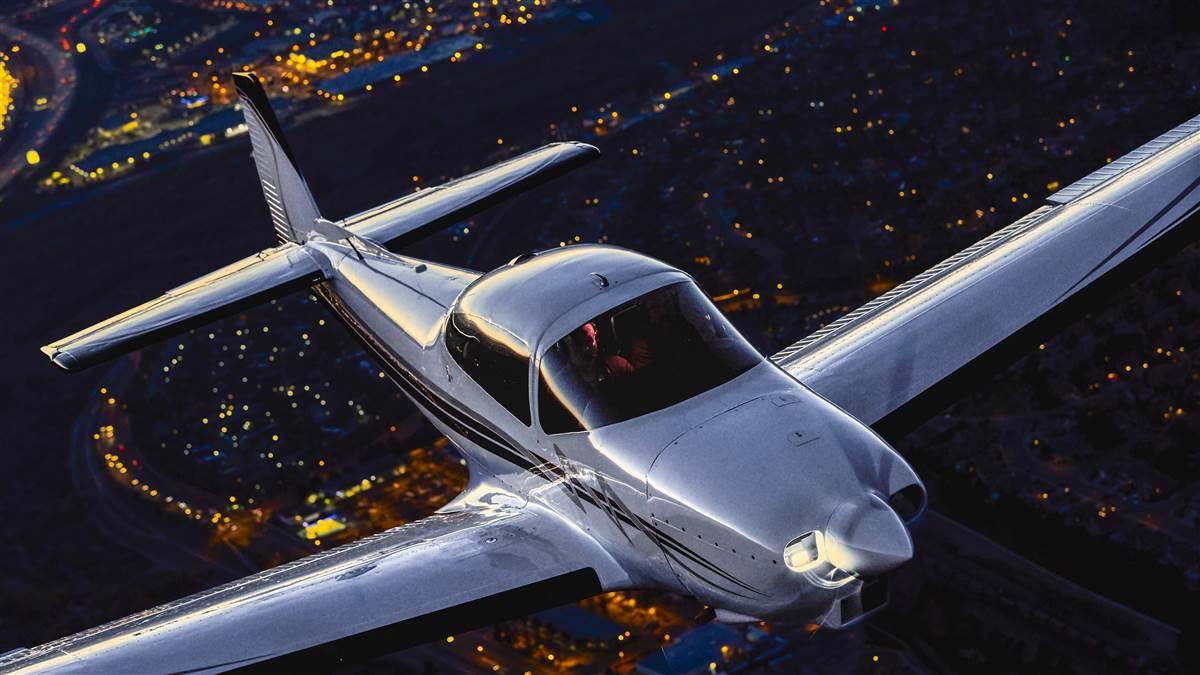The black hole departure
Lying in wait beyond the runway

You’ll learn how poorly humans see in waning light, the benefits of red light, the parallels between night and instrument flying, and the nuances when planning a night flight. Your instructor will also introduce you to darkness-induced illusions.
There’s something alluring about flying at night. The stillness of the air, the faint glow of city lights, and the seemingly endless expanse of darkness all combine to create a mesmerizing experience. But when departing a well-lit runway into a moonless night over water or a featureless terrain, a pilot can quickly find themselves in an unsafe situation.
An illusion is a discrepancy between what we see and what we feel (think: seat-of-the-pants). A pilot experiences the black hole effect when flying a nighttime approach into an airport with inadequate illumination between the airplane and the landing runway. This illusion causes the pilot to misjudge the aircraft as too high, so they adjust their position.
However, there’s another black hole effect not as well known. One waiting at the departure end of the airfield. The moon has set, and as the aircraft accelerates down the runway, darkness floods the distance between the pilot and any visible horizon, rendering flight by outside references impossible. These are the circumstances of the around-the-world father and son team Babar and Haris Suleman in 2014. Although the NTSB could not determine the accident’s probable cause, the prevailing opinion is that the black hole effect may be a contributing factor.
The Sulemans set out from their Indiana home to circumnavigate the globe in the shortest time in a single-engine airplane, and Haris, a 17-year-old private pilot, would be the youngest to lead such an endeavor.
As their Beechcraft Bonanza accelerated down the airstrip, its turbo-normalizing engine roared with a confidence that reassured its onlookers, lifting off just before reaching the runway’s end. The team’s handler received a tracking ping at 9:56 p.m. local time, which confirmed the Bonanza was airborne. Another ping followed shortly after, indicating the pilots were passing 97 feet at 77 knots.
As the father-son crew continued to climb away from the bright lights of the airport and beyond any visible horizon, observers on the ground noticed something wasn’t quite right. Witnesses recounted that the craft had stopped climbing, leveled off, then, within seconds, began banking to the right, continuing its fatal roll before slipping silently into the unforgiving sea.
To avoid this trap, you must maintain situational awareness and remain alert to your surroundings. Adopt a bird’s-eye view when checking out a new airport or even an unfamiliar runway at a known airport. Add Google Earth to your preflight. Closely look at the environment around the airport to identify any potential hazards. Is the airport near a bustling cityscape or in the middle of sprawling cornfields?
Thorough preparation, staying alert, and using good judgment are key when flying, especially at night. Don’t be shy. Seek advice from your flight instructor or other experienced pilots if you’re unsure about any aspect of your planning.
aopa.org/ft/black-hole-departure



